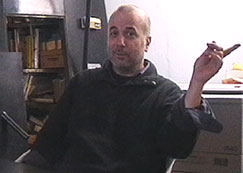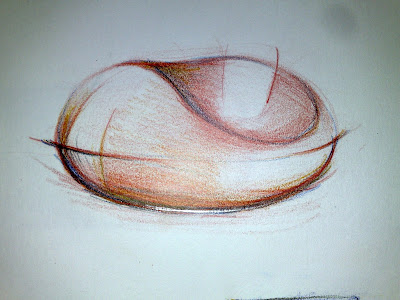Tuesday, March 31, 2009
Esquisse Two - Locking System
have decided to use this spiral cylinder shape as tested could hold a laptop on it but in the class it fail to support weight up to 90kgs.

 here re the sketches for the structure i made.
here re the sketches for the structure i made.
 Some additional design sketches for the structure, using hexagon shape to give strong structure and inter locking to create a hold it steadily.
Some additional design sketches for the structure, using hexagon shape to give strong structure and inter locking to create a hold it steadily.

 here re the sketches for the structure i made.
here re the sketches for the structure i made. Some additional design sketches for the structure, using hexagon shape to give strong structure and inter locking to create a hold it steadily.
Some additional design sketches for the structure, using hexagon shape to give strong structure and inter locking to create a hold it steadily.Tuesday, March 24, 2009
Wednesday, March 11, 2009
List C -Marc Newson, Ron arad
 Marc Newson(1963-)
Marc Newson(1963-) Ron Arad (1951-)
Ron Arad (1951-)I have chosen these two designers, Marc Newson and Ron arad from List C. Both designers did lots of design for different industry such as industrial, exhibition, etc etc. Sharing the same design disiplin, we can see there is similiarity between their design, organic forms are pretty much applied into most of the design. As to differentiate their designs, Marc Newson incorporates a design style known as biomorphism to his various designs. This style uses smooth flowing lines, translucency, transparency and the absence of sharp edges to create a beautiful and ergonomic design. which in other word will be funkily futuristic, but technically rigorous approach to design. In the other hand ron arad 's style, he tries to avoids any final interpretation of his work, which makes his works hardly tell apart, this also helps him not to kill his creativity for production needs.





Tuesday, March 10, 2009
List B - George Nelson, Eero Aarnio
There re pretty much contrast in the designs between these two designers, same as furniture designers, George nelson's chairs design form got the interpretation from early 20th century, but Eero Aarnio 's design is pretty much closer to the current world. We can actually see that Geroge Nelson's design is more angular, the form or shapes and using more general materials, very much suitable to use is office or i should say less modern but more classic look furniture. Eeron Aarnio is at the opposite side, always experimenting with plastics, vivid colors and organic forms, makes him breaking away from traditional design conventions.
List A - Jean Prouve, Hans Wegner
Born ed in the early 20th, these two mid 20th century designers from Europe shares the same design principle of creating modern furnitures in the way appreciating genuine craftmanship. What we could see the difference from these two designer's chairs, Danish designer Hans Wegner was one of the most innovative and prolific of all Danish furniture designers and architec that made mid-century Danish design internationally popular.. Hans Wegner's furniture is based on the principle that good material and good craftsmanship go together hand in hand. Comparing with Jean Pourve's design, Hans Wegner apply more oriental style on his design, most of the chairs you see is much simliar with chinese Oriental Antique Furniture. He probably always thought of himself as a cabinetmaker rather than the international design star he became, and his artisan credentials were never in doubt. “Wegner’s designs were distinguished by their level of craftsmanship, attention to detail and an amazing understanding of timber,” adds Munao.In the other hand, French furniture designer and architect, Jean Pourve, grew up surrounded by the ideals and energy of his father Victor's art collective, "l'École de Nancy." This school came together with the intent to make art readily accessible, to forge a relationship between art and industry, and to articulate a link between art and social consciousness. Although Jean Prouvé shaped his public image around the idea that he was not married to a specific aesthetic, the tenets of "l'École de Nancy" were certainly a powerful influence on his body of work. So from his design you could easily fond that most of the chairs and furnitures were base in simple grometry shape like triangle circle etc etc.

Hans J. Wegner: The Chinese Chair,1956

Hans J. Wegner: The Wishbone Chair,1950
Subscribe to:
Comments (Atom)



































